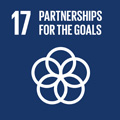- Docente: Chiara Tartarini
- Credits: 6
- SSD: L-ART/04
- Language: French
- Teaching Mode: In-person learning (entirely or partially)
- Campus: Bologna
- Corso: Second cycle degree programme (LM) in Visual Arts (cod. 9071)
-
from Nov 11, 2024 to Dec 18, 2024
Learning outcomes
Students acquire critical knowledge of different orientations and strategies of museum mediation (interpretation) in Italian and international museums. Throughout direct and participatory observation in museums and local institutions, they are able to understand and to evaluate peculiarities and potentialities of museum mediation (interpretation), in the prospect of implementing initiatives that envisage active participation of the public. In particular, they are able to design museum mediation (interpretation) projects that promote the understanding and enhancement of the historical-artistic heritage in order to strengthen commitment to cultural accessibility of the institutions they have come in contact with.
Course contents
The course/lab is organised in two parts: a theoretical part and a practical part. In the first one, we'll analyse the fundamentals of museum "mediation" in order to understand and value cultural heritage. In the second part, we'll focus on the role of expographic texts as tools for the production/mediation of meaning. Writing exercises on museum texts (exhibition panels/labels) will be presented in class.
Readings/Bibliography
All the students (attending or not) are asked to choose 2 texts from the following list:
D. Dean. Museum Exhibition: Theory and Practice, Routledge, London 1996, p. 110–131.
M. Ekarv, Combating redundancy: writing texts for exhibitions in E. Hooper-Greenhill (ed.), The Educational Role of the Museum, 2nd ed., Routledge, London-New York 1999, p. 201-204
H. Gottesdiener, ed., Textes et public dans les Musées, « Publics et Musées », n. 1, 1992, p. 4-103 (choose 1 article)
D. Jacobi, D. Miège, «La médiation écrite de l’art contemporain: tensions et paradoxes», Quaderns de Filologia. Estudis Lingüístics, vol. X, 2005, p. 113-130.
D. Jacobi, Y. Jeanneret, «Du panneau à la signalétique: lecture et médiations réciproques dans les musées», Culture et Musées, Hors-série, 2013, p. 47-72.
D. Jacobi, Les étiquettes dans les musées + Ecrire sur l’art contemporaine in Id., Les musées sont-ils condamnés à séduire, MkF, Paris 2017, pp. 72-104 (ch. 3) p. 167-197 (ch. 6).
P. Mc Manus (1989) «Oh yes, they do: how museum visitors read labels and interact with exhibit texts», Curator, vol. 32, n. 3, 1989, p. 174-189.
K. Tauzin, «Le texte de médiation à la recherche de ses lecteurs modèles», Culture et Musées, n. 3, 2004, p. 117-138.
Further reading suggestions (optional) will be provided throughout the course/lab.
Students with SLD or temporary or permanent disabilities. It is suggested that they get in touch as soon as possible with the relevant University office (https://site.unibo.it/studenti-con-disabilita-e-dsa/en) and with the lecturer in order to seek together the most effective strategies for following the lessons and/or preparing for the examination.
Teaching methods
Lectures, Class presentations&Cooperative learning.
Limited places available for exchange students
Places for incoming exchange students are limited and primarily reserved to students enrolled in art programmes at their home university. To check availability, please write to amac@unibo.it.
Assessment methods
3 steps:
Attending students:
1) [second part of the course/lab] students are asked to write 3 "exhibition panels" (max. 800 characters each one) concerning 3 œuvres/rooms, and to present them in class (PowerPoint / max. 20 minutes);
2) [at least 10 days before the exam date] students have to e-mail the "exhibition panels" in PDF format;
3) [the day of the exam] students will have a short interview (max. 20 minutes) on the selected readings (see above) and on their "exhibition panels".
During the interview, students must demonstrate that they have valued the topics discussed (in class/in the readings) in writing the texts, and will have to explain their lexical and structural choices.
Non attending students:
1) [at least 20 days before the exam date] students are required to contact the professor by e-mail to agree their project on the 3 exhibition panels concerning 3 museum œuvres/rooms;
2) [at least 10 days before the exam date] students have to e-mail the "exhibition panels" in PDF format;
3) [the day of the exam] students will have a short interview (max. 20 minutes) on the selected readings (see above) and on their "exhibition panels".
During the interview, students must demonstrate that they have valued the topics discussed in the readings in writing the texts, and will have to explain their lexical and structural choices.
N.B. Students with SLD or temporary or permanent disabilities. It is necessary to contact the relevant University office (https://site.unibo.it/studenti-con-disabilita-e-dsa/en) with ample time in advance: the office will propose some adjustments, which must in any case be submitted 15 days in advance to the lecturer, who will assess the appropriateness of these in relation to the teaching objectives.
Teaching tools
PowerPoint; video; teaching resources available on VIRTUALE.
Office hours
See the website of Chiara Tartarini
SDGs




This teaching activity contributes to the achievement of the Sustainable Development Goals of the UN 2030 Agenda.
